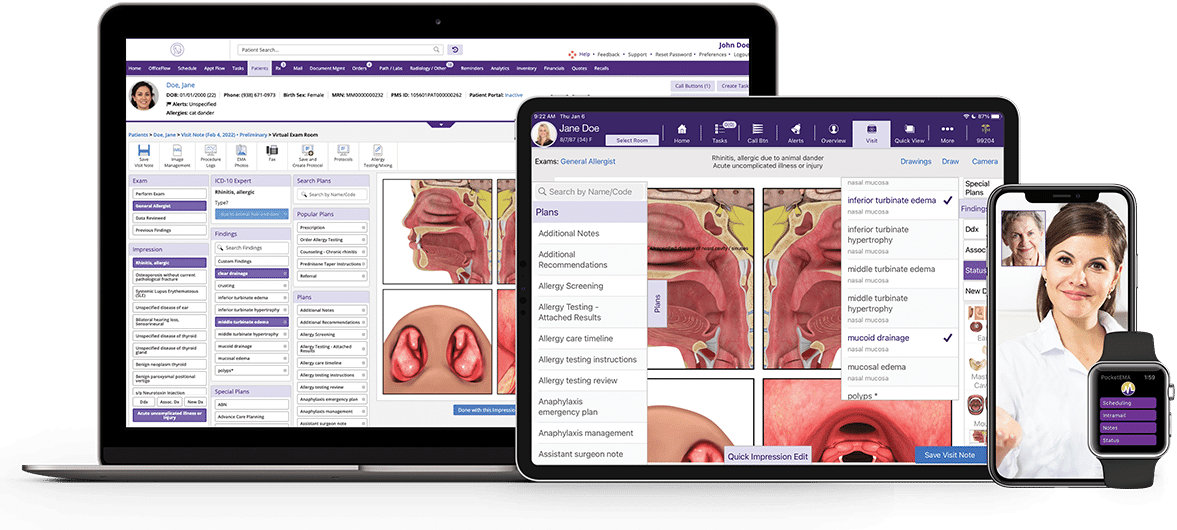Healthcare Staff Retention: Tips to Retain Your Best Employees

Staff retention strategies in healthcare help overcome staffing challenges
Coming up to the second anniversary of COVID-19, about 100 exasperated nurses and staff gathered on a Pittsburgh bridge to demonstrate, calling on hospitals to address rampant staffing shortages, as colleagues were quitting their jobs faster than they could be replaced. Stretched thin, one respiratory therapist — from a team of 39 that used to be 64 — captured the mood: “You know that you’re not able to give all the time that you want to, and that just eats away at you as a caregiver.”1
 Nationwide, healthcare had lost nearly 500,000 workers since February 2020, according to the Bureau of Labor Statistics, and hospitals had to pay nurses bonuses to stay.1
Nationwide, healthcare had lost nearly 500,000 workers since February 2020, according to the Bureau of Labor Statistics, and hospitals had to pay nurses bonuses to stay.1
Why is retention important in healthcare? Because turnover results in a major loss of productivity, and according to a study by the Society of Human Resource Management, employers often spend six to nine months of an employee’s salary to find and train a substitute.3
Managers need to understand not only why employees leave but also why they stay. After reviewing recent literature on employee retention in healthcare, five themes have emerged: hiring, leadership, appreciation, culture, and tools.
 Strategy 1: Hire higher
Strategy 1: Hire higher
Staff retention in healthcare begins with hiring. An A team requires experience, skill and character, and high performers want to work with other talented people. They may seem expensive at first, but they pay dividends not only in productivity but also in retention.3
A 2021 review focusing on emergency medicine supported the theory that higher pay correlated with lower attrition, since income proved to be a major factor in decisions to stay.4
High-income countries face special challenges in staffing rural areas, and rural facilities often deploy incentive programs like visa waivers and professional licenses. But a 2021 review suggests that one of the best staff retention strategies is simply to recruit from rural areas in the first place. Students who grew up or received training in rural areas were more likely to stay in rural facilities.5
If advancement opportunities don’t exist, create them. Keeping people engaged means keeping them challenged. Identify where individuals can serve as experts — supervising inventory, maintaining equipment, training newbies — and remember that networking with professionals in similar roles at other facilities can reduce feelings of isolation, putting their work in broader context.2
Strategy 2: Lead to succeed
Leaders are key to retaining top talent, but a 2017 Gallup poll of a million Americans revealed that nearly 75% who resigned voluntarily did so because of their bosses.3
 Adopt a “transformational leadership” style, which has been associated with lower turnover in multiple studies of staff retention in healthcare. Unlike the older transactional leadership style, which relied on rewards and punishments, the transformational style focuses on intellectual stimulation, individual consideration, inspirational motivation, values, clarity, transparency, commitment, morale, motivation, and the achievement of goals both personal and professional. A 2016 economic analysis found that employees were more likely to stay when they had transformational relationships with their bosses.7
Adopt a “transformational leadership” style, which has been associated with lower turnover in multiple studies of staff retention in healthcare. Unlike the older transactional leadership style, which relied on rewards and punishments, the transformational style focuses on intellectual stimulation, individual consideration, inspirational motivation, values, clarity, transparency, commitment, morale, motivation, and the achievement of goals both personal and professional. A 2016 economic analysis found that employees were more likely to stay when they had transformational relationships with their bosses.7
Play to strengths. By giving employees assignments that highlight their individual talents and skills — more productive than correcting for errors — leaders can drive performance, engagement, relationships, and in the end, retention.3
Train and develop. Employees stick around when they’re learning, so effective employee retention strategies in healthcare include professional development. Consider mentorship programs where managers engage with workers to develop skills and prepare for advancement. Encourage creativity and understand that not every new idea will work out — we learn more from failure than success. When people feel empowered, they’re more likely to stay and contribute good ideas.3
Treat errors as teachable moments, since turnover looms whenever employees fear punishment for mistakes, and remember that regular communications allow for constructive feedback without blame or shame.6
Set realistic expectations. Employees don’t always understand their responsibilities, and the goalposts may shift around them. When leaders explain work clearly, employees can plan activities, tackle priorities, and raise concerns early. Involve team members in decision-making to demonstrate that you value their input — especially important for employee retention in healthcare.3
Strategy 3: Appreciate achievements
Recognize good work. Health providers, especially those on the front lines, want to feel their work is valued. Without recognition, they may perceive themselves as mere cogs in a machine. Tactics can be as simple as sending company-wide email and posting flyers in break rooms.6
 Reward good work with timely raises and promotions. When high performers can grow with you, they’ll stay with you. But go beyond monetary rewards. Throw your performers a party. Highlight them at an all-hands meeting. Invite them to lunch with the boss.3
Reward good work with timely raises and promotions. When high performers can grow with you, they’ll stay with you. But go beyond monetary rewards. Throw your performers a party. Highlight them at an all-hands meeting. Invite them to lunch with the boss.3
Be flexible with schedules. If roles don’t require particular schedules, don’t cram employees into them. Allow people to avoid rush-hour commutes or to work from home when life obligations arise. The COVID-19 lockdown demonstrated that many teams can work remotely just as productively as they do from the office. Flexible schedules and remote work decrease absenteeism and tardiness, increase morale and loyalty, and support work-life balance. For many, remote work is now a requirement.3
Other employee retention strategies in healthcare include health insurance, life insurance, retirement plans, holidays, vacation days, spa days, tuition assistance, gym memberships…. They all make your team members feel appreciated.3
Strategy 4: Create culture
Build organizational culture around values like trust, transparency and happiness. Work those values into everyday operations.3
 Provide opportunities for physicians, nurses and staff to relax and destress. Consultants can teach meditation techniques. Animal therapy can help staff in the same way it helps patients. Offer food alternatives that are healthier than the salty and sugary snacks that are too common. Instead of noisy, fluorescently lighted break rooms, create tranquil “renewal rooms.”6
Provide opportunities for physicians, nurses and staff to relax and destress. Consultants can teach meditation techniques. Animal therapy can help staff in the same way it helps patients. Offer food alternatives that are healthier than the salty and sugary snacks that are too common. Instead of noisy, fluorescently lighted break rooms, create tranquil “renewal rooms.”6
During the depths of the pandemic, the UK National Health Service experimented with cyber forums called wobble rooms — regular, brief, small-group video sessions to which anyone can self-refer. They’re the online equivalents of the physical spaces that provide staff with psychological support.8
Organize team building, which can break down barriers, encourage collaboration, improve job satisfaction, and contribute to staff retention in healthcare. Activities can be as simple as lunch at a favorite eatery, happy hour at a local bar, or sharing a cooking class. Celebrate birthdays and anniversaries with cake in the break room, and if there’s a community event nearby, go together. Building such a culture shows that you care about team members personally.3
Strategy 5: Digitize data
Ban the phrase, “That’s the way we’ve always done it.” Today, paper records require way too much handling. Even older software and servers that used to be leading edge now require too much maintenance, bridging, logging, searching, typing, scrolling… to the point that team members are missing too many lunches and staying in the office too late.
 Upgrading your tech contributes to employee retention in healthcare by eliminating wasted time and signaling that your practice thinks ahead. Embracing the latest workstations, tablets, apps and cloud-based platforms demonstrates that you want employees to do their best work, and you’re creating a future in which they want to work.3
Upgrading your tech contributes to employee retention in healthcare by eliminating wasted time and signaling that your practice thinks ahead. Embracing the latest workstations, tablets, apps and cloud-based platforms demonstrates that you want employees to do their best work, and you’re creating a future in which they want to work.3
Migrate to the cloud, where there’s no server hardware or software to buy, maintain, upgrade or replace, and updates happen effortlessly. Users can work wherever they have a good internet connection.
Start with electronic health records. Look for intuitive software interfaces that:
• Reduce typing and scrolling
• Adapt to the way you practice
• Prioritize your diagnoses and protocols
Demand systems that understand your specialty, with built-in medical knowledge such as:
• Chief complaints
• Diagnoses, plans and procedures
Ask questions like, Can you save custom notes and create master visits for documenting faster? Does the system suggest appropriate ICD-10 codes? Does it build invoices based on your notes?
 Next, consider practice management. The latest systems have productivity features for financial managers, practice administrators, front desk staff and physicians. They can speed up:
Next, consider practice management. The latest systems have productivity features for financial managers, practice administrators, front desk staff and physicians. They can speed up:
• Patient scheduling
• Document management
• Claims submission
• Financial reporting
Sophisticated data analytics mean the admin team can identify patients who need follow-up, the clinical team can track patient outcomes, and the financial team can spot reimbursement trends.
The latest engagement tools enhance communications via:
• Patient self-scheduling and reminders
• Messaging services
• Follow-up surveys
With an all-in-one system, your whole team can work together seamlessly, with the potential not only to see more patients but also to have a life outside the office.
If you’re considering new systems, consider ModMed® specialty-specific suites, which include all of these features and benefits.
References
1. Kris Maher and Julie Wernau, “Omicron Leaves Nurses Stretched Thin and Seeking Help From Burnout,” The Wall Street Journal (2022 January 24) online www.wsj.com/articles/omicron-leaves-nurses-stretched-thin-and-seeking-help-from-burnout-11643025604?st=yxjiixr6k1y4y7b&reflink=desktopwebshare_permalink
2. Anna Newton-Levinson, et al., “Supporting Staff in Southern Family Planning Clinics: Challenges and Opportunities,” Maternal and Child Health Journal (2022 January 8) vol. 26, pp. 319–327, link.springer.com/article/10.1007/s10995-021-03339-5
3. Catherine Morin and Christopher Sirk, “20 Strategies to Retain Employees,” Crm.Org (2020 February 21) crm.org/articles/how-to-retain-employees
4. Daniel Darbyshire, et al., “Retention of doctors in emergency medicine: a scoping review of the academic literature,” Emergency Medicine Journal (BMJ) (2021 September) vol. 38 issue 9, pp. 663–72, emj.bmj.com/content/38/9/663.full
5. Deborah Russell, et al., “Interventions for health workforce retention in rural and remote areas: a systematic review,” Human Resources for Health (2021 August 26) 19(1):103, pubmed.ncbi.nlm.nih.gov/34446042/
6. Jess White, “Employee Retention in Health Care: 4 Keys to Keep Your Best and Brightest,” HRMorning blog (2019 September 10) www.hrmorning.com/articles/employee-retention-healthcare
This blog is intended for informational purposes only and does not constitute legal or medical advice. Please consult with your legal counsel and other qualified advisors to ensure compliance with applicable laws, regulations and standards.